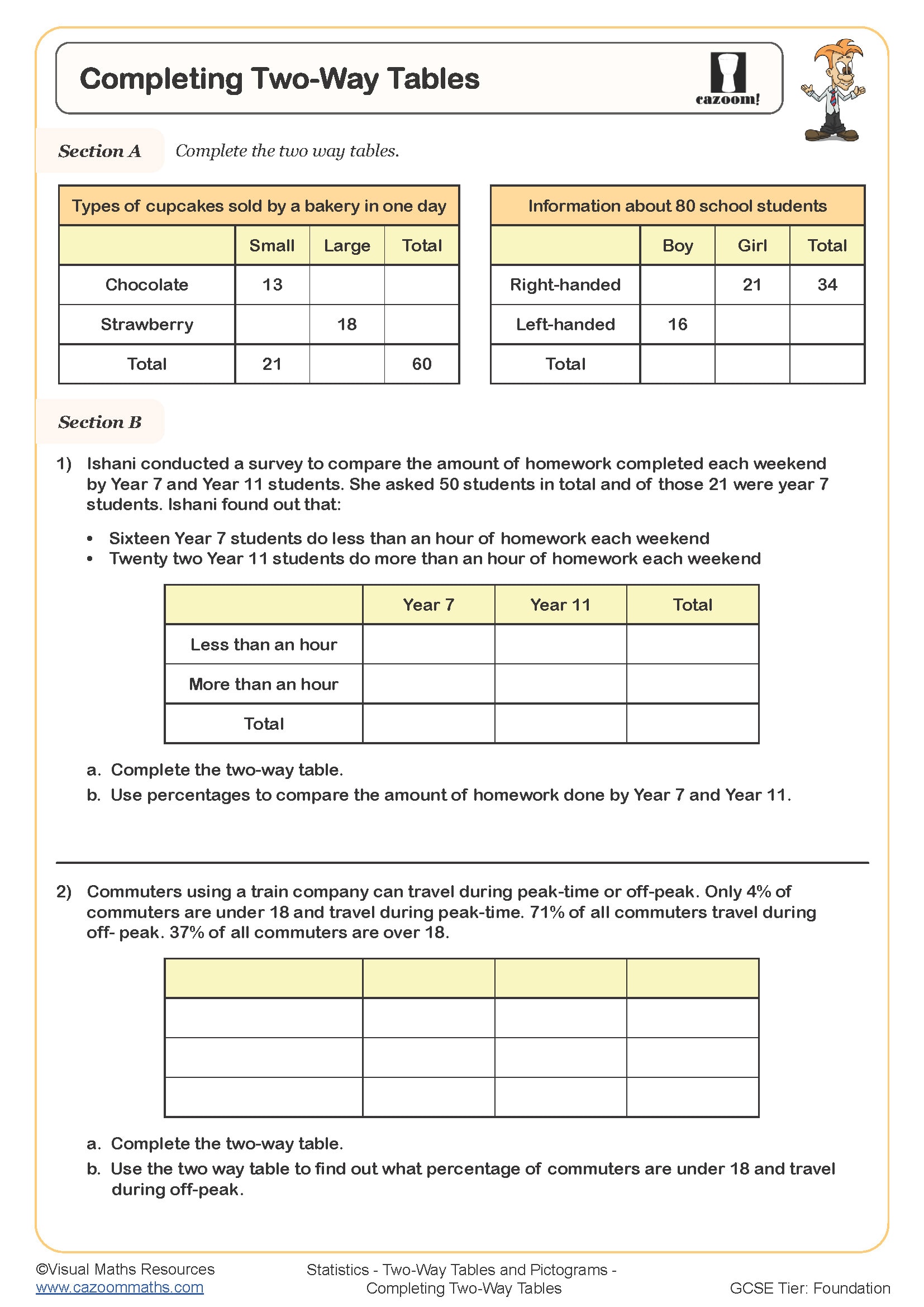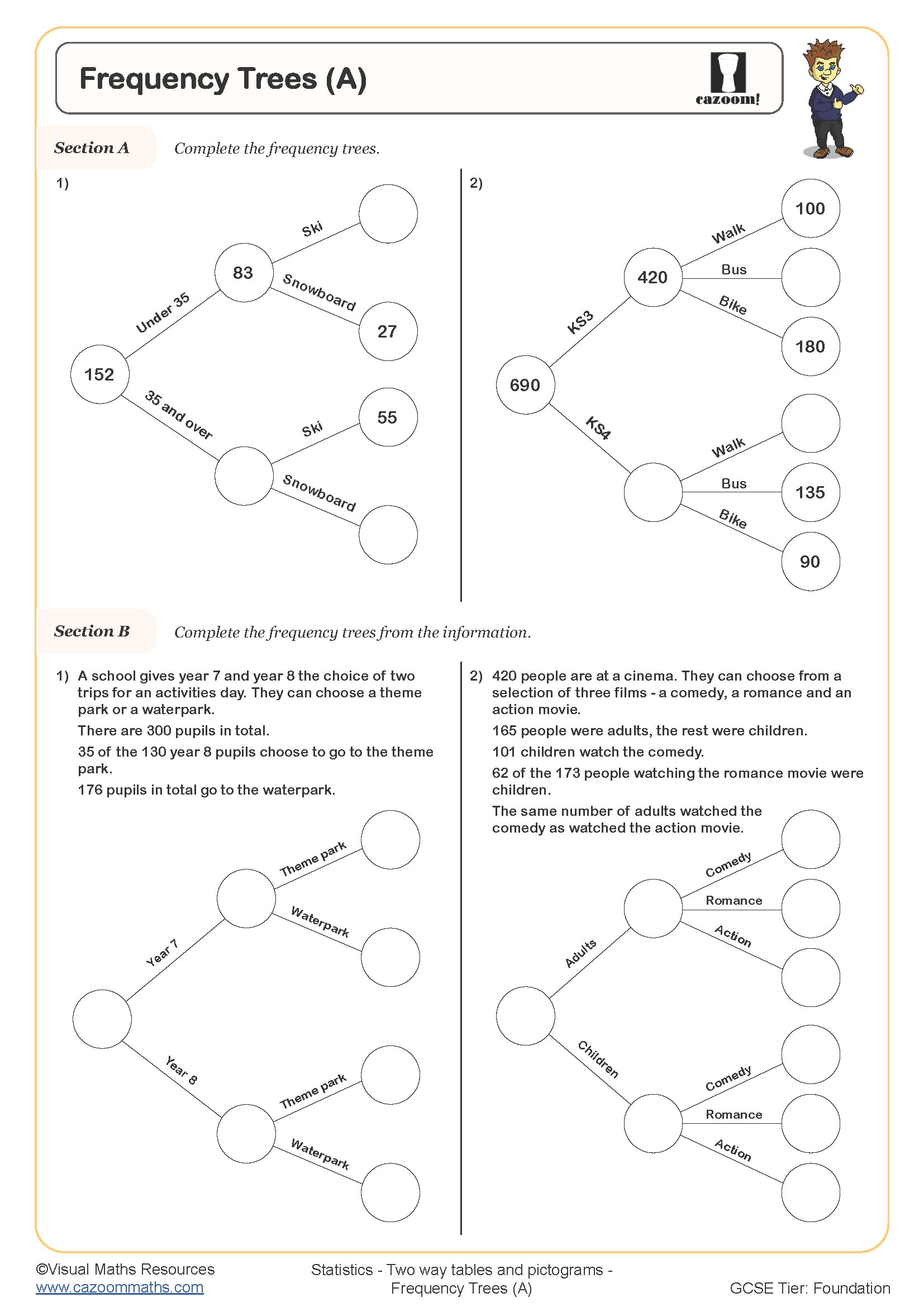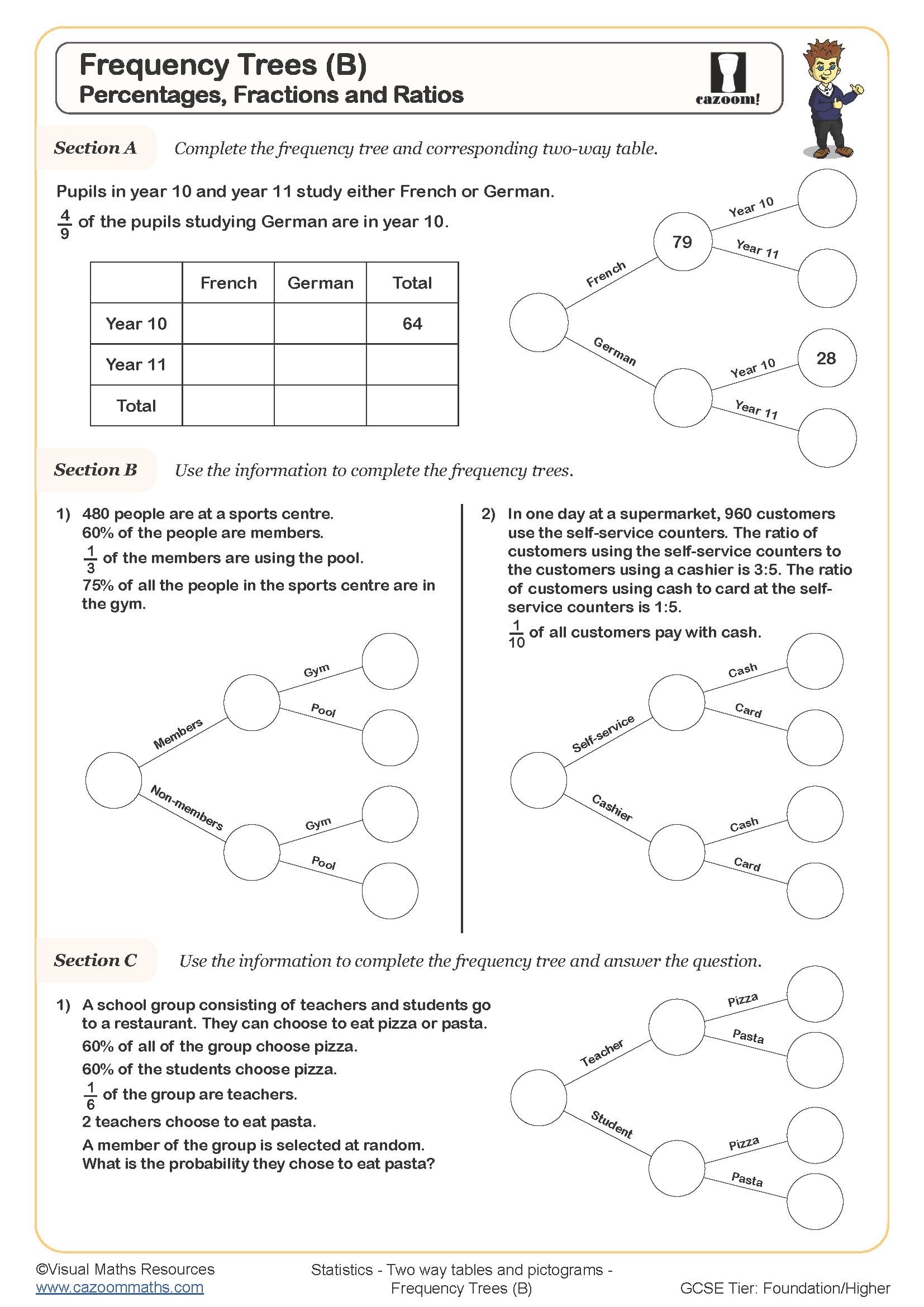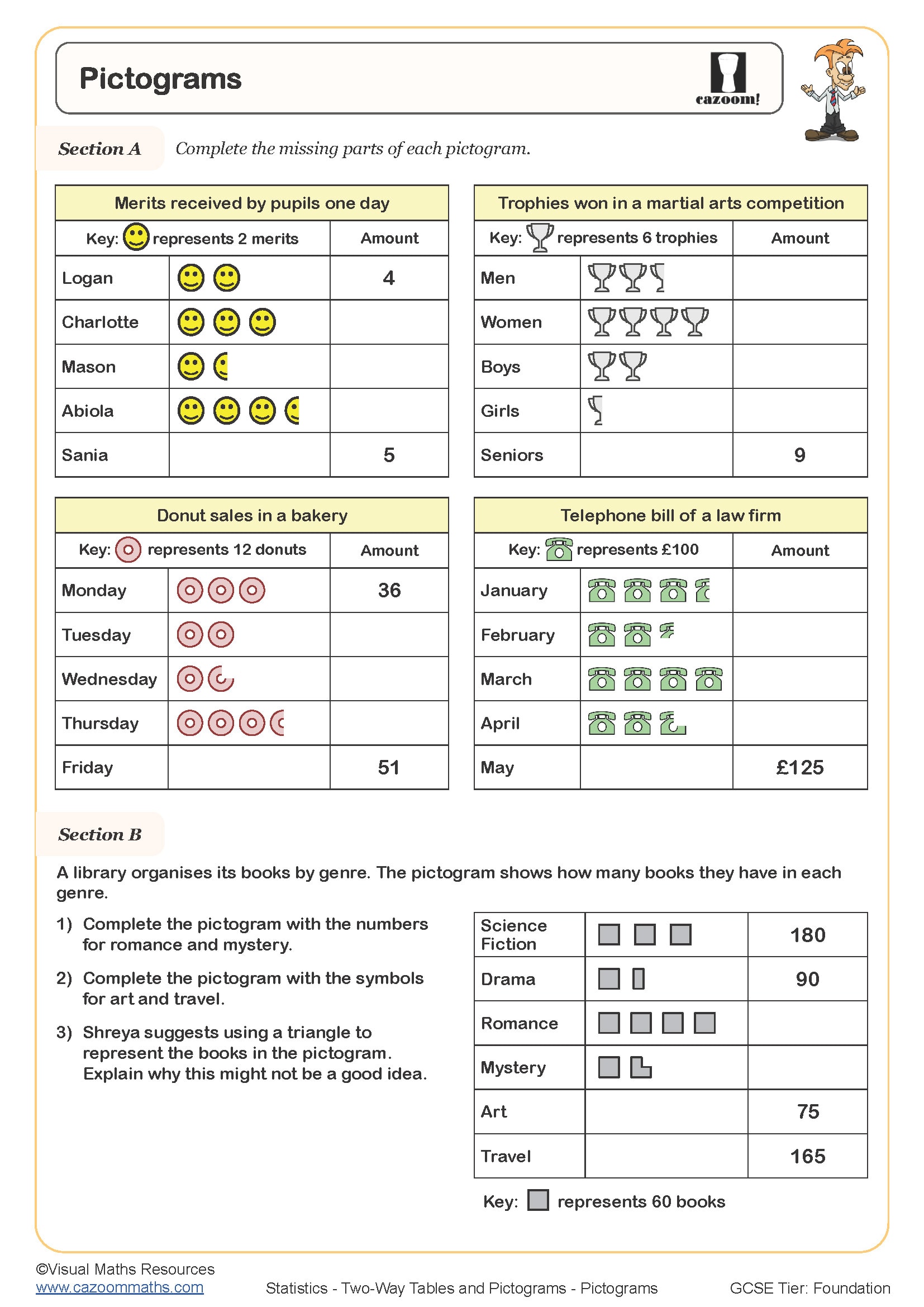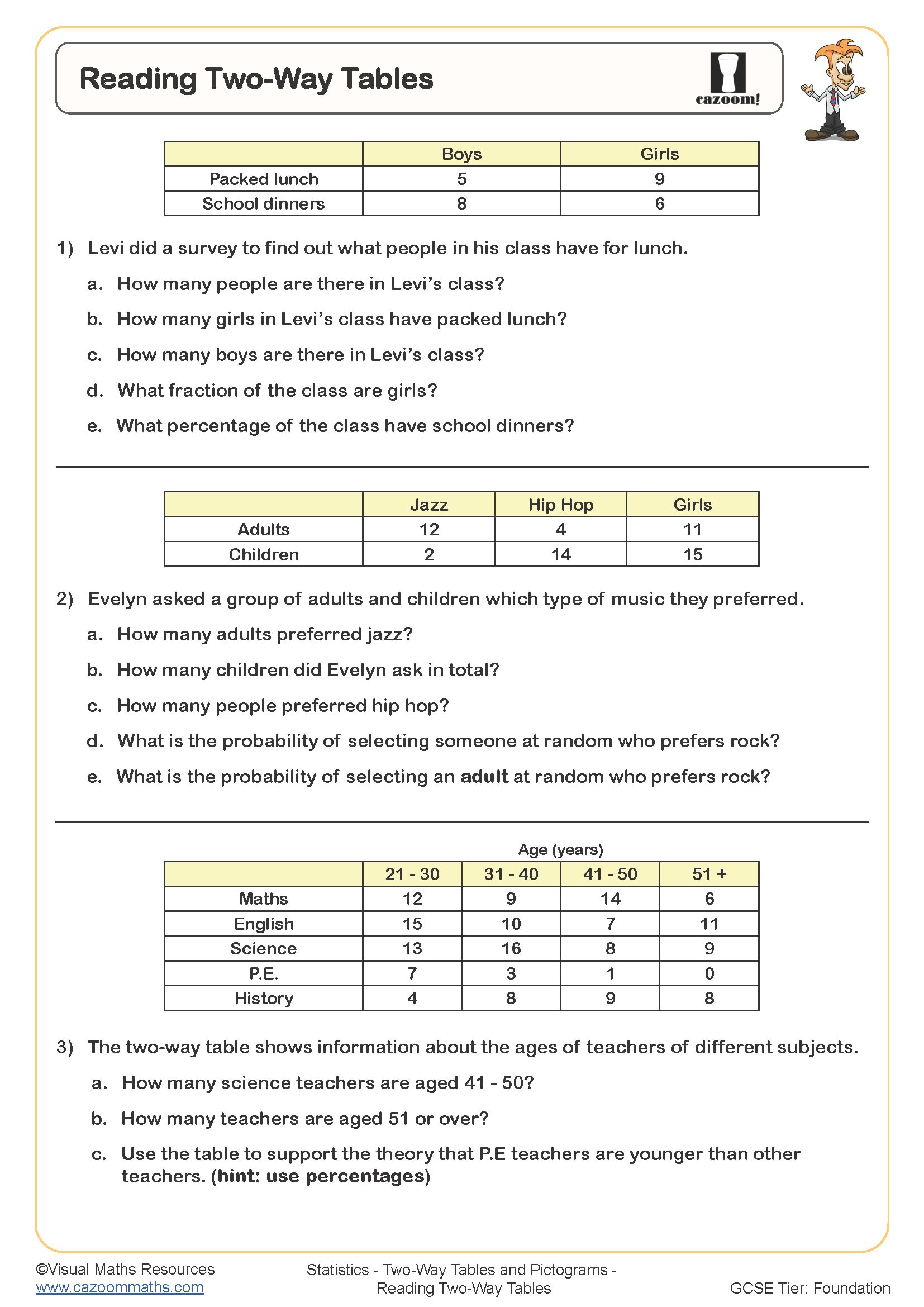Year 8 Two-Way Tables and Pictograms Worksheets
How Two-Way Tables and Pictograms Lift Year 8 Progress
Progress in statistics comes from meeting ideas in multiple representations and at increasing depth. The resources link pictorial keys to structured tables, which enables students to read scales correctly while using totals and subtotals and reasoning under constraints. The short tasks with proper scaffolding help students identify their mistakes at an early stage while promoting organised work that leads to better explanations. Students who regularly work with these formats develop better retrieval skills, which helps them prepare for future topics, including grouped data and probability. Students achieve consistent improvement in accuracy and reasoning through this approach, which avoids overwhelming them with too much context or test language.
Specific learning benefits include:
• Builds a precise reading of pictogram scales and keys
• Uses row, column and grand totals to find missing values
• Compares two categorical variables with justified statements
• Works efficiently with constraints and sanity checks
• Computes simple conditional frequencies from given data
• Strengthens statistical vocabulary and clear written reasoning
What Year 8 Two-Way Tables & Pictograms Worksheets Cover
The sequence transitions from familiar visuals to structured tables, supporting a concrete-to-pictorial-to-abstract journey. Each worksheet includes a worked solution so learners can see a sensible route from data to conclusion and self-correct effectively.
The worksheets in this collection include:
• Frequency Trees (A) — complete basic trees from partial data and totals.
• Frequency Trees (B) — build trees from short contexts and compare groups.
• Pictograms — read and draw scaled pictograms using a clear key.
• Completing Two-way Tables — find missing counts using row/column totals.
• Reading Two-way Tables — interpret categories and compute conditional frequencies.
Why Teachers Choose These Year 8 Two-Way Tables Resources
In busy classrooms, materials must work the first time and suit mixed attainment. These worksheets strike a balance between accessibility and challenge: concise prompts get everyone started, while extension questions encourage critical thinking without adding clutter. Clean layouts minimise distractions, and consistent task types speed up routines so you can focus on discussion and feedback. Answer sheets are genuinely time-saving—the worked solutions show the thinking behind each step, not just the final figure—so pupils can review independently and you can target support where it matters most. Whether for a full lesson, a homework set, or a quick intervention, the collection drops neatly into existing schemes.
Where Year 8 Two-Way Tables Skills Matter Beyond Class
Data skills show up anywhere information is counted, grouped, or compared; recognising this makes practice feel purposeful.
• Summarising match results by team and home/away
• Comparing survey responses across classes or clubs
• Reading transport timetables by route and time period
• Tracking household spending by category and month
• Recording experiment outcomes under two conditions in science
• Monitoring attendance by activity and week for school clubs
• Interpreting local demographics by age group and area
